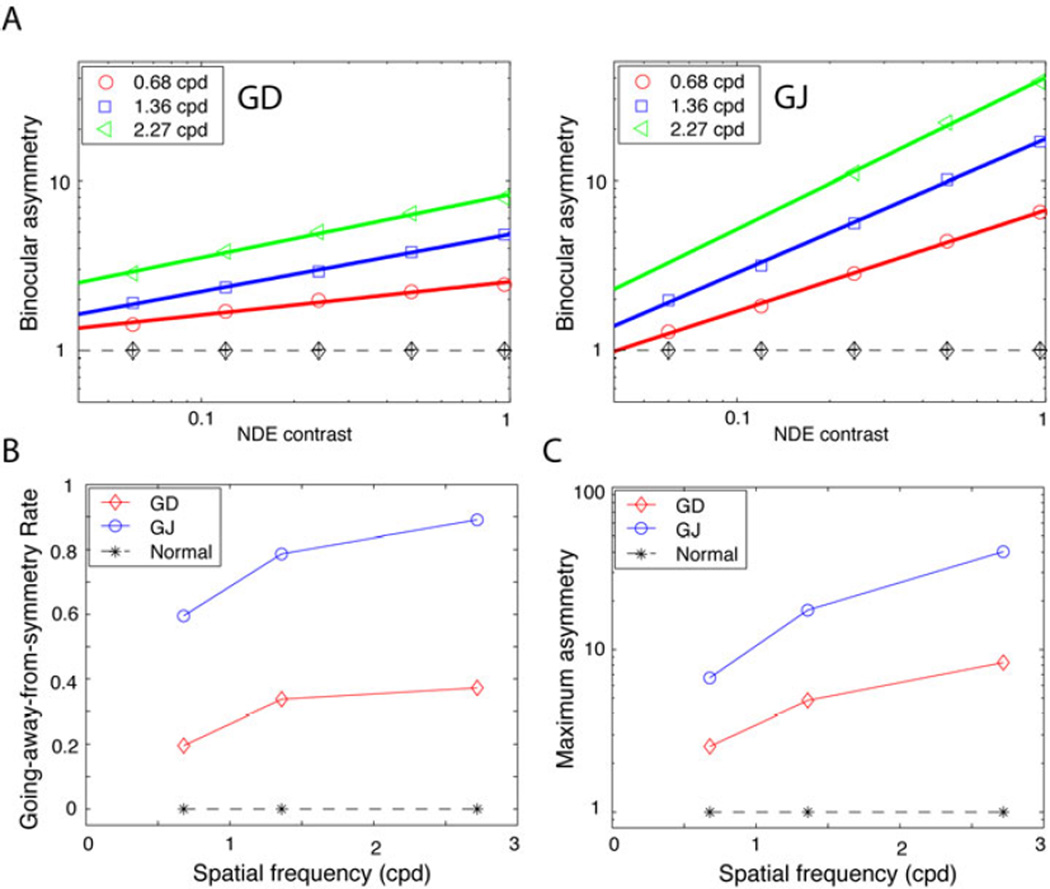Figure 4.
A. Binocular asymmetry (δB = non-dominant eye/ dominant eye or NDE/DE contrast ratio at rebalanced vision) as a function of NDE contrast for two amblyopic observers GD (left) and GJ (right), adapted from Ding, Klein & Levi 9. For one spatial frequency, the data can be fit by a straight line, the rebalance line (solid coloured lines), at which the imbalanced binocular vision is rebalanced. The horizontal dashed line at δB = 1 shows the symmetry line for normal vision, and the black markers indicate the right eye/left eye (RE/LE) contrast ratio for symmetric binocular vision. B. The going-away-from-symmetry rate (the slope of a rebalance line in A) as a function of spatial frequency. The horizontal black dashed line at 0 indicates that normal vision always remains symmetric (never going away from the symmetry). C. Maximum asymmetry (when NDE’s contrast = 100%) as a function of spatial frequency. The horizontal black dashed line at 1 indicates no asymmetry in normal vision.

